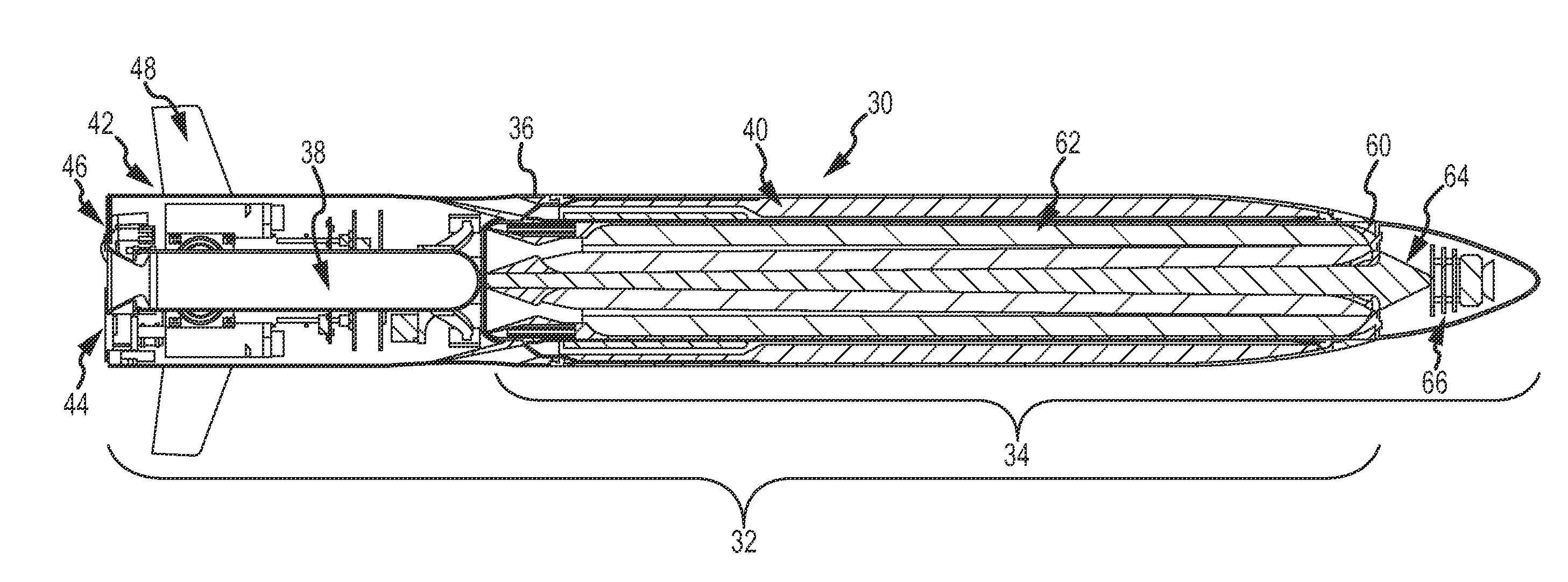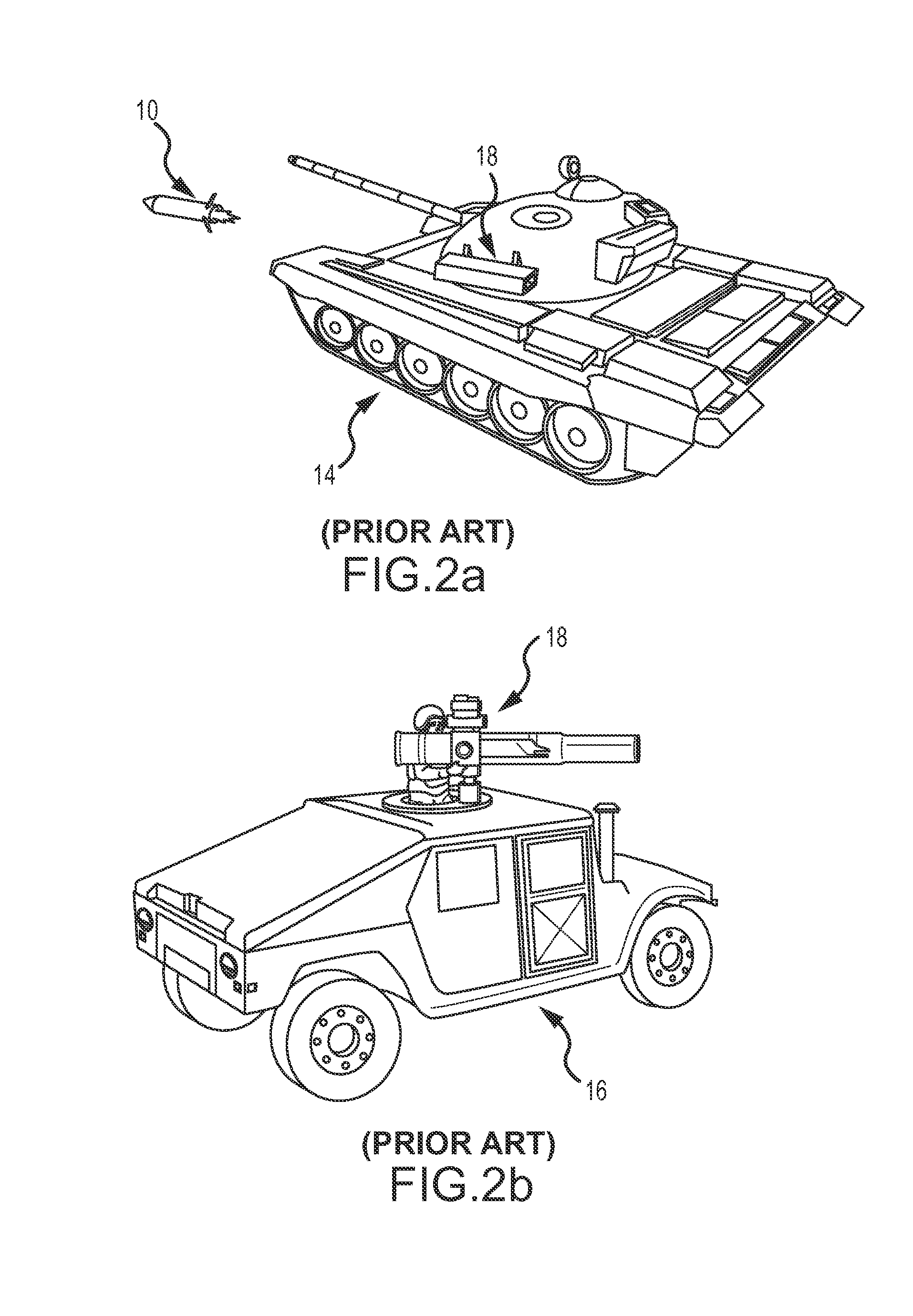Multi-stage hyper-velocity kinetic energy missile
a kinetic energy missile and hyper-velocity technology, applied in direction controllers, instruments, weapons, etc., can solve the problems of inconvenient discarding or modification of tow infrastructure, ineffective against modern composite armour, and high cost of hyper-velocity propellants, etc., to reduce the weight of propellant, save propellant, and effective guidance and maneuvering
- Summary
- Abstract
- Description
- Claims
- Application Information
AI Technical Summary
Benefits of technology
Problems solved by technology
Method used
Image
Examples
Embodiment Construction
[0024]The present invention provides a multi-stage hyper-velocity kinetic energy (KE) missile. The missile may be configured for use with different platforms and different guidance systems but is particularly well suited for use with the existing base of TOW launch containers and platforms satisfying all of the physical, operational and guidance constraints while maintaining the performance of the KE-rod penetrator.
[0025]This is accomplished with a ‘missile in a missile’ architecture in which the hyper-velocity KE missile (HVKEM) includes a 1st stage flight missile and a 2nd stage kill missile that includes a KE-rod penetrator. The flight missile cruises at a relatively low velocity (less than Mach 1.5) to conserve propellant (weight) and to allow for effective guidance and maneuvering until the missile is in close proximity to the target. Guidance of the flight missile may be CLOS, fire-and-forget etc. When the missile is within the lethal range of the KE-rod penetrator, the kill m...
PUM
 Login to View More
Login to View More Abstract
Description
Claims
Application Information
 Login to View More
Login to View More - R&D
- Intellectual Property
- Life Sciences
- Materials
- Tech Scout
- Unparalleled Data Quality
- Higher Quality Content
- 60% Fewer Hallucinations
Browse by: Latest US Patents, China's latest patents, Technical Efficacy Thesaurus, Application Domain, Technology Topic, Popular Technical Reports.
© 2025 PatSnap. All rights reserved.Legal|Privacy policy|Modern Slavery Act Transparency Statement|Sitemap|About US| Contact US: help@patsnap.com



